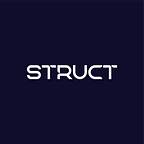Struct Primitives & Interest Rate Tranches (Part I)
Struct’s vision is to become DeFi’s most trustworthy and customer-centric platform, where customers can structure and discover investment products tailored to their own investment needs and objectives.
Struct Primitives are one of the core pillars that will help us to achieve this vision. In this first series, we will cover the first primitive that we are launching and why they are important.
Struct Primitives
Struct Primitives are financial instruments, developed by the Struct team, based on what is missing in the DeFi ecosystem today. As the term “Primitive” implies, they can be combined with other instruments to enable a more complex financial product. Struct Primitives aim to widen the design space for structured products, by increasing the types of instruments available.
Interest Rate Tranches
Our first primitive, Interest Rate Tranches, serves as a settlement layer for the tranching of yield-bearing positions to create a fixed-income and variable-yield instrument.
Structured investments typically involve exposure to fixed income markets/derivatives. The fixed income market has the potential to be significant, but at this time, on DeFi, the market is immature. Its current status is that:
- Many of the parameters available on different derivative instruments are static in nature. These instruments are predominantly set by the developers of protocols, leaving investors with no choice but to take it or leave it.
- Many of the protocols offering these instruments experience fragmented liquidity as a result of having multiple maturity dates. Despite this, they continue to utilize conservation functions that cause high slippage if larger volumes are transacted under low market depth.
At Struct, we believe a tranching structure will overcome these challenges. Tranching an underlying yield-bearing position changes how the yield is distributed. This distribution follows a waterfall mechanic, which orders how the yield from a position is returned. At the end of the investment period, the principle and fixed rate is returned to investors who subscribed to the fixed-income tranche before the remainder is then passed on to investors that subscribed to the variable tranche. This distribution ultimately splits an investment position into slices, with financial terms suitable for specific investors. It also benefits the ecosystem by creating financial instruments with comparatively less risk than the underlying yield-bearing position.
Fixed rates are challenging algorithmically since they are ultimately derivatives of an underlying yield-bearing position that varies with market conditions. For this reason, our Interest Rate Tranches will expire after a specified maturity period.
When the smart contract is created, a subscription period for investors to deposit into the tranche they want exposure to will begin, and the deposit will be queued. Deposits within tranches will be invested into the underlying yield-bearing position. These funds will stay in the position until the predetermined maturity period.
In the next article, we will run through how we determine our sources of yield, and the potential integrations we are exploring.
We hope you found this explanation of Struct Primitives useful and see why we believe they represent a powerful offering in the DeFi market.
For any questions on Struct Primitives, join our Discord community or email us at contact@struct.fi.
We will be following this update with two further updates next week, so please do check back in to see what else Struct is doing.
